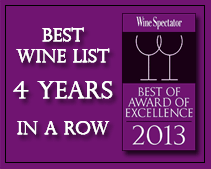Manila restaurants control operating costs by boosting productivity
February 6, 2011
You have two major “cost centers” at your restaurant. One is food and beverage. The other is labor. Which one do you think is most problematic?
If you said labor, either you’ve been running a restaurant for at least a few months, or you have some genuine insight into the challenges of running a restaurant.
Labor issues are still the No. 1 concern of most restaurant owners and managers. Food and beverage costs are held in check through price adjustments, portion controls and through purchasing efficiencies. On the other hand, labor costs are not controlled by paying low wages. First, the minimum wage sets the floor for the price of labor in the United States. Second, and more importantly, there is a matter of supply and demand. Most restaurateurs know there are simply not enough qualified applicants for the positions they need to fill.
Labor costs are controlled through sound scheduling and improving employee productivity. You increase productivity through training, better kitchen and dining room layouts, and the use of labor-saving equipment and products. That said, this article does not go into those human resource issues as much as it addresses cost-related issues and ways to increase employee productivity — the areas in which you have most control. It emphasizes the importance of scheduling in controlling labor costs and the ways to collect and analyze payroll data.
You have two major “cost centers” at your restaurant. One is food and beverage. The other is labor. Which one do you think is most problematic?
If you said labor, either you’ve been running a restaurant for at least a few months, or you have some genuine insight into the challenges of running a restaurant.
Labor issues are still the No. 1 concern of most restaurant owners and managers. Food and beverage costs are held in check through price adjustments, portion controls and through purchasing efficiencies. On the other hand, labor costs are not controlled by paying low wages. First, the minimum wage sets the floor for the price of labor in the United States. Second, and more importantly, there is a matter of supply and demand. Most restaurateurs know there are simply not enough qualified applicants for the positions they need to fill.
Labor costs are controlled through sound scheduling and improving employee productivity. You increase productivity through training, better kitchen and dining room layouts, and the use of labor-saving equipment and products. That said, this article does not go into those human resource issues as much as it addresses cost-related issues and ways to increase employee productivity — the areas in which you have most control. It emphasizes the importance of scheduling in controlling labor costs and the ways to collect and analyze payroll data.
The Power of Numbers and Observation
It is very difficult to fly successfully by the seat of your pants in any complex business. Before you can develop appropriate and effective measures for labor cost control, you must gather the necessary information on which to make your decisions. Therefore, the accumulation and reporting of relevant labor cost information is critical. To do this, you need more than your calculator; you need to look around you.
Productivity and labor cost efficiency cannot be addressed and assessed only in “quantitative” terms, i.e., “straight numbers.” If you’ve been tracking your ratios, you might be encouraged to find that payroll comprises a lower percentage of overhead or that you are finding the number of customers per labor hour is creeping up. And these can be good signs. Just don’t lose sight of the “qualitative” side of these activities, i.e., the stuff you can figure out by looking around you, asking questions, and using common sense. If customer service is compromised, the initial savings of a lower payroll cost can be negated by a decrease in sales caused by customer defections to competitors.
On that note, employees cannot be viewed and treated as “inputs” without feelings, needs, and fears. Every time the industry has faced a labor shortage, it becomes more empathetic to the needs of employees. This is accompanied by a temporary and short-term shift away from a bottom-line mentality to one emphasizing employee retention and job satisfaction. We have to remind ourselves that the two most important groups of individuals affecting our business’s success are the customers and the employees. Both must be given the same respect and appreciation.
Don’t Hang Your Hat on the ‘Payroll to Total Sales’ Ratio
When trying to determine the productivity of your staff, the traditional ratio of “payroll to total sales” is not an effective and accurate measure of worker productivity and scheduling efficiency. Essentially, you pull this ratio from your income statement to tell you how much sales you are squeezing out of your payroll expense. What could be more telling? Well, there are three reasons why additional measures must be used to analyze labor costs.
First, ratios such as this are not enough to help you sleep well at night (or keep you up at night, depending on the figure). The traditional labor cost ratio really just indicates to management what needs to be addressed, without providing any specific information. For example, typically, the monthly income statement shows the payroll for the entire month as a single figure. Since the figure is a composite of wages from employees in all job categories, e.g., servers, cooks, and dishwashers, it is impossible to tell from the percentage which category is the cause of the variance from standard cost. Further, it does not tell management which meal period or day of the week the greatest variance occurred.
Second, the figures reported on the monthly income statement are historical and after-the-fact. Even if the completed statement is reviewed by management the first week of the following month, nothing can be done about what has transpired. Labor cost must be pre-controlled. This requires labor cost figures to be compiled at least weekly and preferably daily.
Third, the payroll percentage is “distorted” by increases and decreases in sales. When business is good, the percentage of payroll to sales is low. Exactly the opposite occurs when sales are low. The decline or increase in the percentage is in no way always an indication that labor productivity is higher or lower; it is partially caused by the large fixed-cost component of payroll. In addition, the percentage can be further distorted by increases in menu prices, wage rate increases, discount promotions and shifts in the menu sales mix.
So what is the best measure of productivity? There is no one magic ratio. You need to monitor several benchmarks, to take the pulse of the house.
Purchase Labor, Don’t Just Schedule It
You cannot control labor cost until you understand that you are not “scheduling” people but rather “purchasing” the potential to do work. There is a tendency to schedule more people than are actually needed because of the fear of being short-handed. If the expected increase in business never materializes and everyone scheduled shows up, productivity declines. The only conceivable reason for scheduling an additional employee is that certain work needs to be done and that person will be able to do the required job. While many operators are feeling the effects of the short supply of quality applicants, the scheduling of employees within their payroll budget is sometimes contrary to their ability to sustain service quality to the customer.
As you know, the cost of employing a worker is far greater than his total net pay, regardless of the worker being salaried or hourly. Labor cost can be defined as any cost incurred as a result of employing a worker. You can estimate that an employee’s total compensation, be it deferred or otherwise, is at least double his earnings before taxes. Additional costs of employing a worker include fringe benefits like insurance, paid vacations, profit sharing, uniforms, meals, training costs, discounts, retirement plans, and the like. Therefore, total labor cost includes any cost incurred as the result of employing a worker.
You must resist the temptation to “panic hire.” Panic hiring occurs when you have been working short-handed for several weeks and the applicant pool does not have the qualifications you want. However, you have not had a day off in three weeks and you are fearful that other employees who have been working overtime are getting close to quitting themselves. Subsequently, in desperation you hire the “best” of the applicants you have interviewed instead of holding out for the right person. You may end up creating more problems by doing this than if you worked through it until you were able to get the kind of applicant you really need.
Most of Your Labor Cost is a Fixed Expense
Realize that the greatest portion of your labor cost is a “fixed” expense. If you break down your payroll into “fixed” and “variable” cost labor, you will likely find that the largest portion of your payroll is “fixed,” i.e., a constant expense of the business that does not change based on sales, number of employees, or other variables. The fixed-cost portion of payroll is not just management salaries that must be paid regardless of sales volume. It is also the hourly employees you need to schedule on the slowest hours, meal periods and days of the week. It is your “skeleton crew” or the bare-bones staff you need to open your doors even when sales revenues fall to their lowest levels. It can only go lower if you start having management and other employees doing more than one job like cooking, bartending or waiting tables. At this point, labor cannot be further reduced without lowering of standards.
The employees who are added to the fixed schedule as business increases are your “variable cost employees.” Few restaurants bring in the entire shift of employees at the same time. They arrive in half-hour intervals and schedules are staggered to correspond to the arrival of customers. On busy nights additional servers, bussers and kitchen staff are scheduled to handle the increased volume of business. It is having too many variable-cost employees on the schedule that puts payroll percentages over standard costs.
Labor cost does not increase proportionally with sales increases. This will cause labor cost percentage to fluctuate without management doing anything with the schedule. For example, an increase of 50 customers an hour will require one or two more servers to be added to the schedule while other job categories remain constant. Additional bartenders or hostesses may not be added to the schedule until customer counts increase by 100. Subsequently, payroll costs will increase in incremental steps, not in direct proportion to sales.
As customer counts reach their maximum and the restaurant is on a wait, the maximum number of employees is scheduled. No additional employees will be added because productivity will not be increased and they may even get in each other’s way. Technically, labor cost is “fixed” at the maximum as well as the minimum business volume. However, unless the restaurant opens to a wait and remains on one until closing, scheduling will include both fixed- and variable-cost employees.
The take-home point: Set up a reporting and evaluation system to monitor labor costs. Analysis of labor cost begins with the assembly of data and its organization in a format that can be readily interpreted by management. Without cost data, there can be no analysis. The data required is already assembled in your payroll and sales reports. It needs to be put into a format that allows you to see the relationships between the numbers. When customer counts are broken down by meal periods and days of the week and cross-referenced with labor hours, sales revenues and payroll costs, the format will reveal the days, meal periods and job categories that are not within your standards.
The measurement criteria used to analyze labor productivity must be held constant over time. If the criteria are changed, interpretation of current data with historical records will be distorted. For example, customers or covers, the one inflation proof criteria used in scheduling and labor cost productivity analysis, must clearly define what constitutes “one cover.” Do you count small children? Do you count adults that do not order a full breakfast? Do you count “seats” or “orders”? What you do is your decision. What is most important is that customers are counted in a consistent manner.
A coffee shop in a motel decided to stop counting “coffee only” customers that came in every morning after they had been counting them for several years. This gave the impression that customer counts were down about 20 percent. This made the historical breakfast customer counts relatively useless. What they should have done was to simply count “coffee only” customers separately, but keep a tally of them so overall customer counts could be compared.
Any cost analysis system requires that standards of scheduling be based on forecasts of customer counts over the payroll period. Typically, forecasts should be made for a 10-day period to a two-week period of time. The time frame should correspond to your restaurant’s payroll period. The heart of the labor analysis is the measurement of actual labor hours and customer counts against the forecasted figures. Organizing weekly payroll data into a format that will allow you to see how payroll costs are broken down will greatly improve your insight into controlling labor cost. The comparison of current figures with past periods will indicate where variances in labor cost standards are occurring. Total aggregate figures by themselves will not provide the detail needed for cost analysis. By monitoring the labor cost per cover by job category, you can quickly determine where over scheduling took place.
Control Labor Costs Through Better Scheduling, Not Lower Wages
As noted, one does not control labor cost by keeping salaries and wages low. In fact, operations paying less than the going wage rate in their locale will find it difficult to hire and retain the more productive employees. Think about it. If you felt you were a very good bartender, cook or manager, would you quit your current job and go work for someone who paid you less than you were making? I don’t think many of us would work for less.
It is not unusual to find low productivity and inefficiency in operations where low wages are paid relative to other operations of its type in the immediate area. This is because a low wage scale will primarily attract marginal employees whose efficiency, work ethic and temperament disqualifies them from getting identical positions in companies paying above-average wages to above-average applicants. The better employees will go where they will be better compensated for their skills and abilities.
A regional fried chicken operator seeking to sell franchises asked me to help him develop a franchisee manual. When I went over his job categories and wage rates I discovered that the highest-paid hourly employees were making only 10 cents to 20 cents per hour more than the starting hourly rate. I asked about this and was told that employees quit when they were not given raises, and that did not concern the manager since he could just hire someone else at a lower rate. He believed that paying lower wages was a way to control payroll.
About one-third of all employees who leave a job voluntarily, leave for better pay. You may have heard that money cannot be a motivator for increasing productivity. Well, it is probably true that just increasing the wages of an employee will not necessarily mean they will be more productive, but when money is used as a reward for outstanding performance, it can be an effective motivator.
There are a number of scheduling methodologies you can use that will reduce your labor costs just by adjusting when you have employees arrive and depart from work. Efficient scheduling must reflect the variations in business volume that occur during the day and even meal period. Your goal is to accomplish the necessary workload with a minimum number of labor hours while maintaining your level of service.
Productive employees should be rewarded with pay increases and earn more than average employees. Treat your valuable employees like you do your most valuable customers. Realize that the labor cost per cover and the number of covers per labor hour can be improved only with productive employees. If productive employees are treated no differently from marginally productive ones, there is no benefit to the employee to do more than average for he or she will get the same enumeration either way.
Manila is fast becoming a city of luxurious fine dining accompanied by fine vintage wine. Not only must a 5-star Italian, French or Continental restaurant offer good food, nice ambience and immaculate service the restaurant wine list must be equally exciting to make the evening of wine and dine a memorable one.
This 5-star fine dining restaurant in Pampanga Philippines is highly recommended by food critics and frequent diners in Manila as a place to wine and dine in Subic Angeles City Clark Freeport Zone. Although it is a famous fine dining restaurant with an award winning 3000-line restaurant wine list, Yats Restaurant is also a popular restaurant for family with children. Aside from French Mediterranean haute cuisine, this restaurant also serves healthy food and the best vegetarian cuisines in the Philippines. Private dining rooms are also available in this restaurant for business and personal meetings of 4 to 20 people.
Favorites of frequent diners, foodies and wine lovers are steaks, Wagyu, Foie Gras, seafood, lobsters, venison, kangaroo loin, osso buco, veal chops, Kurabuto pork, escargots and a good selection of cheeses to enjoy with fine Vintage port and Sauternes. Cuban cigars such as Monte Cristo, Cohiba, Upmann, Partagas, Romeo Julieta and Trinidad are also available in the Magnum Room which is a wine bar and lounge for before and after dinner relaxation. A good selection of Armagnac, Cognac, Single Malt, Vodka and other liquor is served in addition to the wine vintage wines some served by the glass.
Built in 2000 by Hong Kong-based Yats International, a developer and operator of hospitality and residential projects in the Philippines, fine dining Yats Restaurant and Wine Bar has served not only as Pampanga’s highly recommended restaurant and wine lounge, but also as a place where business executives meet to finalize business deals over a nice meal with some fine vintage wine.
For comments, inquiries and reservations click on Click here for inquiry and reservations
Restaurant@Yats-International.com
(045) 599-5600
0922-870-5178
0917-520-4401
Ask for Pedro and Rechel
Getting to this fine dining restaurant of Angeles City Clark Freeport Zone Pampanga Philippines
How to get to this fine-dining restaurant in Clark Philippines? Once you get to Clark Freeport, go straight until you hit Mimosa. After you enter Mimosa, stay on the left on Mimosa Drive, go past the Holiday Inn and Yats Restaurant (green top, independent 1-storey structure) is on your left. Just past the Yats Restaurant is the London Pub.
Yats Restaurant & Wine Bar
Mimosa Drive past Holiday Inn, Mimosa Leisure Estate,
Clark Freeport Zone, Pampanga, Philippines 2023
Manila Sales Office
3003C East Tower, Phil Stock Exchange Center,
Exchange Rd Ortigas Metro Manila, Philippines 1605
(632) 637-5019 0917-520-4393 Rea or Chay
For any assistance in planning and organizing a wedding ceremony, indoor or outdoor garden reception or to find other wedding service providers, Click here to contact us click here
For assistance in hotel and resort bookings in Clark, Pampanga, Philippines, log on to
http://www.HotelClarkPhilippines.com
To buy wine in Manila, Pampanga, Angeles City, Clark or Subic please log on to http://www. ClarkWineCenter.com
To inquire with the highly recommended beach resort hotel in Clark Pampanga visit http://www.ClearwaterPhililippines.com
For more information about Clark, Pampanga, Philippines log on to
http://www.ClarkPhilippines.com









